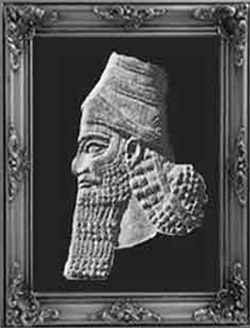


The purpose of this booksite is to publish the findings of the history project: Xerxes The Recount, concerning the Second Persian War (480-479 BC) and focusing on the logistics of the Persian army in its march from Sardis to Thermopylae.
The primary source is Herodotus of Halicarnassus (c. 490–425 BC), and the main goal is to test whether the figures Herodotus gives for the size of the Persian army are feasible.
The historical feasibility study has two components: literary research and field work. The latter entails retracing the itinerary of Xerxes' March by air photography and on the ground inspection, book in hand.
Evidence and considerations presented in these pages will show how Herodotus' numbers for the size of the Persian army were indeed within the logistical capabilities of the Achaemenid Empire (550–330 BC) at its apex. If this view is correct, it might have implications on larger issues, one of them, undoubtedly, would be the much discussed veracity of Herodotus.
An army the size Herotodus gives, while feasible may well still be incorrect or improbable, but I am confident his numbers were not impossible and, as it will be shown, are quite plausible. Luckily, simple arithmetic suffices to build a dossier on which to base a reasonable interpretation and explain why and how the Achaemenid Empire would have been able to field an army of the size Herodotus reported.
This is in a few words the object of the work I submit for the appraisal of my readers.

Q: Who is the writer and what does he know?
A: My name is Tiglath. At your service in all things Xerxes.
Any pretension to scholarship would amount to nothing more than a persistent and enthusiastic interest browsing ancient history—mostly Roman as an honor and Greek as a treat—for over half a century.
Q: Who cares?
A: The Persian Wars and Xerxes' March in particular are much celebrated signature events in the history of Western civilization. We join a conversation between readers and writers that started millennia ago. Xerxes The Recount aspires not to say the last word but to keep the conversation going.

The period concerning this historical piece begins with Persian Achaemenid king Darius I The Great, making intense preparations to invade Greece to avenge his defeat at the Battle of Marathon (490 BC) and other perceived slights. Darius, however, dies before he can march on Greece. His son and successor, Xerxes I, decides to continue his father's plans and after some dithering, resumes preparations for war. Xerxes gathers an army of unprecedented size and sets out from Sardis, the capital of Lydia (modern Turkey) on a march to the Hellespont, and through the Chersonese, Thrace, Macedonia, Thessaly and the Pass of Thermopylae, before striking Attica, burning Athens, and briefly occupying the land of the Greeks bent on revenge and enlarging an empire already stretching from India to Libya. Xerxes' brief imperial presence in Europe ended after the decisive Greek victory in the naval Battle of Salamis (480 BC), and the following year his army was conclusively defeated in the land Battle of Plataea and the Battle of Mycale. The Greeks formed the Athens-dominated Delian League and for the next thirty years waged war on the Acheamenid Empire, expelling the Persians from Europe and Ionia (western Turkey), until the Peace of Callias (449 BC) finally ended the half-century of warfare.
THANKS
With special thanks to the good folks at Forum of the Society of Ancients (SOA). Justin Swanton, author of Ancient Battle Formations, started a thread (The Thread) in April of 1918 asking: Could the Persian Empire logistically support an army several million strong? The very topic central to this project. The thread went on for 75 pages and more than a year, the last post was in May 2019, and remains a great big silo of ideas to be eternally grateful for.
I follow, cover and use many of the ideas and words written by Justin, Patrick, Jim, Duncan, Andreas, et al., and giving proper attribution individually would add a cacophony to the narrative. I do it only when I want to paraphrase closely or quote exactly what they wrote, if there is no better way to say it—often the case. The ideas from The Thread form a useful dossier to illuminate the reader on this curious topic forever alive: Numbers. We know how the war turned out, so actual size of an army beyond big and massive, should not matter so much. True,... but numbers are divine certainty, it appears... so what's not to like?
Special thanks to: Justin Swinton, Patrick Waterson, Jim Webster, Duncan Head et al., for the riches of interesting views, insights, and information given so generously, and for their unwitting contributions to this project by my appropriation of ideas and repetition of words, in aid of my research and report. It's humbling to fine such depth of knowledge in a debate so full of unknowns. SOA is an exceptional forum, indeed. Keep it going.
Xerxes-The-Recount has much to thank The Thread for the generated enthusiasm when I discovered how much more the great event of Xerxes' March entailed. Great reading.